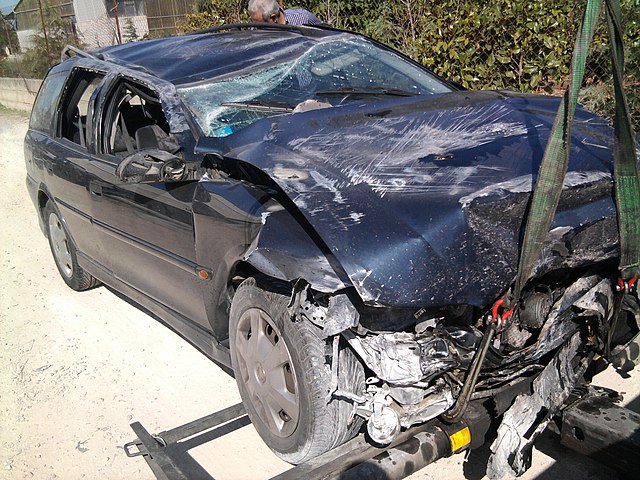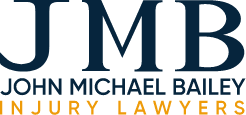Types of Accidents: From Common Mishaps to Unforeseen Catastrophes
Accidents are an unfortunate and often unexpected part of life. They can happen to anyone, anywhere, and at any time. While accidents can vary widely in their causes and consequences, understanding the different types of accidents can help us better prepare and mitigate risks. In this comprehensive guide, we will explore a diverse range of accidents, from common mishaps to unforeseen catastrophes.

15 Types of Accidents and How To Prevent Them
Listed below are 15 types of accidents also see our types of accident infographic below.
1. Road Traffic Accident
Estimated Frequency: High
Road traffic accidents are among the most common and familiar types of accidents. This type of accident involves collisions between vehicles and can result in a wide range of injuries, from minor scrapes to fatalities. Factors such as speeding, distracted driving, and impaired driving contribute to the prevalence of road traffic accidents.
Prevention Tip: Obey traffic laws, avoid distractions while driving, and never drive under the influence of alcohol or drugs.
Get a free case evaluation today!
Types of Accidents Video: The dangers of distracted driving
2. Slips, Trips, and Falls Types of Accidents
Estimated Frequency: High
Slips, trips, and falls are everyday occurrences that can happen in homes, workplaces, and public spaces. These accidents often result from wet or uneven surfaces, inadequate lighting, or cluttered walkways. While they may seem minor, they can lead to serious injuries, especially among the elderly.
Prevention Tip: Keep walkways clear, maintain proper lighting, and use non-slip surfaces where appropriate.
3. Workplace Accidents
Estimated Frequency: Moderate to High
Workplace accidents encompass a wide range of incidents that occur on the job. These accidents can result from machinery malfunctions, falls from heights, exposure to hazardous substances, and more. Employers are responsible for providing a safe work environment and training employees on safety procedures.
Prevention Tip: Follow workplace safety protocols, wear appropriate protective gear, and report unsafe conditions to your supervisor.
4. Medical Accidents
Estimated Frequency: Moderate
Medical accidents, also known as medical errors, occur within the healthcare system. They can include misdiagnoses, surgical errors, medication mistakes, and infections acquired in healthcare settings. These accidents can have severe consequences for patients’ health and well-being.
Prevention Tip: Be proactive in your healthcare, ask questions, and seek a second opinion if necessary.
5. Natural Disasters
Estimated Frequency: Low to Moderate
Natural disasters, such as earthquakes, hurricanes, floods, and wildfires, are unpredictable events that can cause widespread devastation. Preparedness and awareness are essential for minimizing the impact of these disasters on individuals and communities.
Prevention Tip: Familiarize yourself with local disaster plans and have an emergency kit ready.
6. Industrial Type of Accidents
Estimated Frequency: Moderate
Industrial accidents occur in factories, manufacturing plants, and other industrial settings. These accidents can result from equipment failures, chemical spills, and fires. Strict safety regulations are in place to prevent such incidents, but they still occur.
Prevention Tip: Adhere to safety protocols, wear protective gear, and report any equipment issues promptly.
7. Sports and Recreational Accidents
Estimated Frequency: Moderate
Participating in sports and recreational activities is a great way to stay active, but it comes with a risk of accidents. These can include sprains, fractures, and more severe injuries. Proper training, equipment, and supervision can reduce the risk.
Prevention Tip: Wear appropriate safety gear and follow the rules of the sport or activity.
8. Aviation Accidents
Estimated Frequency: Low
While aviation accidents are relatively rare, they garner significant attention due to their potentially catastrophic nature. These accidents involve commercial and private planes and helicopters and can result from various factors, including mechanical failures, pilot error, and adverse weather conditions.
Prevention Tip: Trust reputable airlines and pilots and adhere to all safety instructions during flights.
9. Fire and Burn Accidents
Estimated Frequency: Moderate
Fire and burn accidents can happen in homes, workplaces, and public spaces. They can result from electrical faults, gas leaks, cooking mishaps, and more. These accidents often lead to severe injuries and property damage.
Prevention Tip: Install smoke detectors, maintain electrical systems, and exercise caution when working with fire or heat sources.
10. Recreational Water Accidents
Estimated Frequency: Moderate
Accidents in recreational waters, such as swimming pools, beaches, and lakes, can occur due to drowning, diving accidents, and watercraft collisions. Vigilance and knowledge of water safety are essential to prevent these incidents.
Prevention Tip: Learn to swim, follow lifeguard instructions, and always wear life jackets when boating.
11. Construction Site Accidents
Estimated Frequency: Moderate to High
Construction sites are inherently hazardous environments. Accidents can involve falls, falling objects, heavy machinery, and more. Strict safety measures and training are critical to reducing the risk of accidents in construction.
Prevention Tip: Adhere to safety regulations, wear appropriate protective gear, and report unsafe conditions.
12. Electrical Accidents
Estimated Frequency: Moderate
Electrical accidents can result from faulty wiring, electrical fires, electrocution, and more. Electrical safety is crucial in homes and workplaces to prevent these potentially deadly incidents.
Prevention Tip: Hire qualified electricians for installations, avoid overloading circuits, and use electrical appliances and tools properly.
13. Bicycle and Motorcycle Accidents
Estimated Frequency: Moderate
Bicycle and motorcycle accidents involve riders of two-wheeled vehicles. These accidents can result from collisions with other vehicles, road hazards, and impaired riding. Helmets and protective gear are vital for reducing injuries.
Prevention Tip: Always wear a helmet, obey traffic laws, and stay visible to other road users.
14. Explosions and Structural Failures
Estimated Frequency: Low to Moderate
Explosions and structural failures can occur in industrial facilities, buildings, and infrastructure. They may result from gas leaks, structural weaknesses, or sabotage. Vigilance and maintenance are essential to prevent such catastrophic events.
Prevention Tip: Regularly inspect buildings and infrastructure for signs of damage or deterioration.
15. Boating and Maritime Accidents
Estimated Frequency: Moderate
Boating and maritime accidents can involve recreational boats, commercial vessels, and cruise ships. These accidents may result from collisions, capsizing, or onboard incidents. Familiarity with watercraft safety is crucial.
Prevention Tip: Attend boating safety courses, follow maritime regulations, and be cautious while on the water.
Types of Accident Infographic

Conclusion on Types of Accidents
Accidents can happen to anyone, but understanding the various types of accidents and taking preventive measures can reduce the risk and severity of these incidents. Whether it’s practicing safe driving, maintaining a secure workplace, or being prepared for natural disasters, we all play a role in preventing accidents and ensuring our safety and that of those around us. If you require a car accident lawyer in Memphis or Tupelo, John Michael Bailey has got a personal injury lawyer near you, if you are in Memphis, TN or Tupelo, MS. Get in touch for a free consultation!









